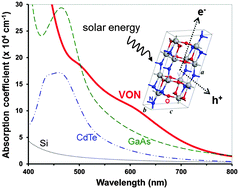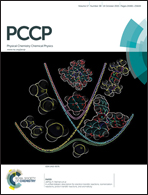Predicting suitable optoelectronic properties of monoclinic VON semiconductor crystals for photovoltaics using accurate first-principles computations†
Abstract
Using accurate first-principles quantum calculations based on DFT (including the DFPT) with the range-separated hybrid HSE06 exchange–correlation functional, we can predict the essential fundamental properties (such as bandgap, optical absorption co-efficient, dielectric constant, charge carrier effective masses and exciton binding energy) of two stable monoclinic vanadium oxynitride (VON) semiconductor crystals for solar energy conversion applications. In addition to the predicted band gaps in the optimal range for making single-junction solar cells, both polymorphs exhibit a relatively high absorption efficiency in the visible range, high dielectric constant, high charge carrier mobility and much lower exciton binding energy than the thermal energy at room temperature. Moreover, their optical absorption, dielectric and exciton dissociation properties were found to be better than those obtained for semiconductors frequently utilized in photovoltaic devices such as Si, CdTe and GaAs. These novel results offer a great opportunity for this stoichiometric VON material to be properly synthesized and considered as a new good candidate for photovoltaic applications.


 Please wait while we load your content...
Please wait while we load your content...